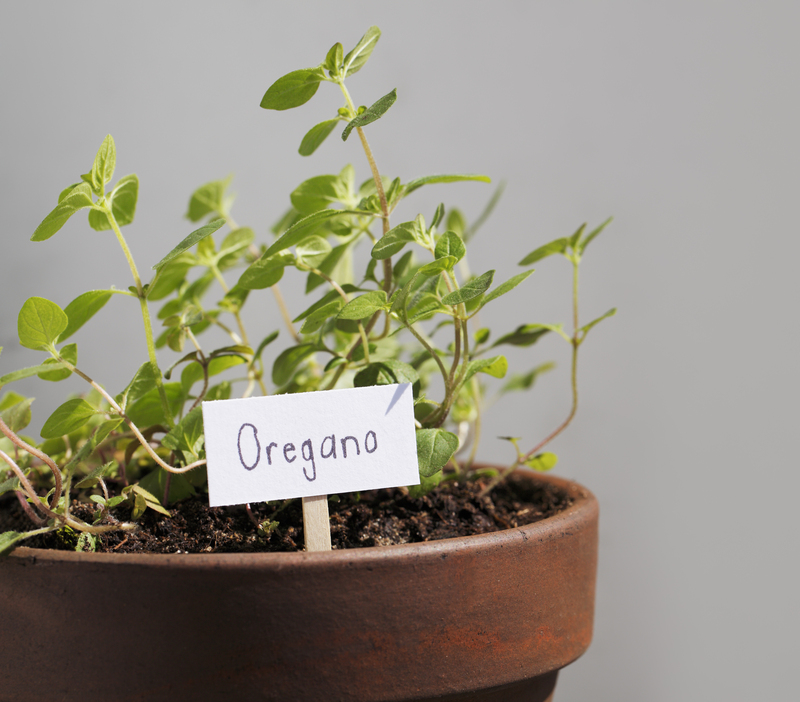Winter-Proof Your Garden: Essential Steps for Plant Protection
Posted on 16/06/2025
Winter-Proof Your Garden: Essential Steps for Plant Protection
As the temperature begins to drop and the first signs of frost appear, every gardener must ask: Is my garden ready for winter? Winter plant protection is crucial for ensuring your cherished plants survive the harsh, cold months and emerge thriving in spring. In this comprehensive guide, we'll walk you through the essential steps to winter-proof your garden, covering techniques, materials, and best practices to help your plants tough out extreme weather.
Why Winter-Proofing Your Garden Matters
Winter can be a challenging season for gardens:
- Low temperatures can freeze roots and tissues, causing permanent damage.
- Frost and snow can break branches and crush delicate plants.
- Moisture fluctuations may lead to root rot or desiccation.
- Harsh winds dry out leaves and soil, stripping away essential moisture.
By undertaking winterizing steps in your garden, you can minimize winter damage, prevent plant loss, and set the stage for robust growth next season.

Planning Your Winter Plant Protection Strategy
Preparation is key. Begin by understanding your garden's unique needs:
- Know your hardiness zone: The USDA Plant Hardiness Zone Map determines which plants will survive your local winter conditions.
- Evaluate plant sensitivity: Identify which species in your garden are more vulnerable to cold stress.
- Assess your soil and microclimate: Well-drained soil and sheltered areas provide better winter protection for plants.
Tip: Make a Plant Protection Checklist
Before you begin, list all your plants and note their specific winter needs. This ensures that nothing gets overlooked in your winter-proofing routine.
Essential Steps to Prepare and Protect Your Garden Plants
1. Mulching: Nature's Insulation Blanket
Mulching is a time-tested winter plant protection technique:
- Apply a 2- to 4-inch layer of organic mulch (such as straw, shredded leaves, or bark chips) around the base of your plants.
- This insulates roots, balances soil temperature, and helps retain vital moisture.
- Avoid piling mulch directly against stems or tree trunks, as this can foster rot.
Best for: Perennials, trees, shrubs, and tender root crops.
2. Watering Before the Freeze
It might sound counterintuitive, but watering your garden before the soil freezes is crucial. Well-hydrated plants are better equipped to withstand cold stress because:
- Moist soil retains more heat than dry soil
- Plants can absorb moisture and strengthen before dormancy
Note: Avoid overwatering, which can lead to root rot--especially for plants in clay-rich soils.
3. Wrapping and Covering Tender Plants
Some plants--particularly newly planted trees, evergreens, roses, and certain ornamental shrubs--require additional protection from frost and snow. Here's what you can do:
- Use burlap, horticultural fleece, or frost cloths to wrap sensitive plants and trunks.
- Set up wooden frames or stakes to keep covers from crushing delicate foliage.
- Secure coverings at the base to prevent wind from blowing them off.
Pro tip: Avoid using plastic directly against plant material, as it can trap moisture and cause mold or freeze damage.
4. Pruning for Winter Hardiness
Pruning in fall can help some plants survive winter better, but it's not always universally recommended.
- Remove dead, diseased, or damaged wood to prevent decay and harboring of pests.
- For many shrubs and trees, delay severe pruning until late winter or early spring to avoid stimulating new growth that might get damaged by frost.
5. Move Pots and Tender Plants Indoors or Sheltered Areas
Potted plants, tropicals, and tender annuals are especially vulnerable to freezing temperatures. To winterize your garden pots:
- Relocate them to garages, greenhouses, or enclosed porches before the first frost.
- Group pots together and wrap containers in bubble wrap or burlap for extra insulation if they must remain outside.
6. Protecting Trees from Winter Injury
Young or thin-barked trees are susceptible to sunscald and winter cracking:
- Wrap tree trunks in late fall using commercial tree wrap, and remove it in early spring to prevent pest infestation.
- Paint trunks with white latex paint diluted 50% with water to reflect sunlight and prevent bark splitting.
Commonly vulnerable trees: Maples, fruit trees, and young conifers.
7. Safeguarding Evergreens and Hedges
Evergreens lose moisture through their needles and leaves, making them prone to winter desiccation. Steps for protecting these plants include:
- Mulch at the base to protect roots and retain moisture.
- Water deeply throughout fall until the ground freezes.
- Apply anti-desiccant sprays to the foliage to reduce moisture loss.
- Shelter with burlap screens to deflect wind and heavy snow.
How to Protect Garden Beds and Vegetable Patches for Winter
Cleaning and Prepping Vegetable Beds
- Remove spent annuals, fallen leaves, and diseased debris that could harbor pests or pathogens.
- Amend soil with compost or well-rotted manure to enrich it for next season.
- Cover beds with a thick layer of straw, chopped leaves, or a biodegradable fabric row cover.
Bonus: Planting cover crops like clover or rye can help prevent soil erosion and add nutrients during the dormant period.
Storing and Protecting Garden Equipment
Don't forget your tools! Clean and oil your gardening implements to prevent rust, and store them in a dry, sheltered location.
Advanced Winter Protective Techniques for Gardens
Building Cold Frames and Mini Greenhouses
To extend your growing season or protect favorite plants, consider DIY cold frames or garden cloches:
- Construct with recycled windows, clear plastic, or acrylic panels for budget-friendly protection.
- Open or vent during sunny winter days to avoid overheating and maintain air flow.
Making Windbreaks for Wind-Sensitive Plants
Planting strategic windbreaks--such as rows of evergreens, fences, or burlap screens--can significantly reduce winter wind stress and winter burn in exposed gardens.
Applying Row Covers for Spring Bulbs and Perennials
An extra layer of protection for early-emergent bulbs and perennials:
- Install floating row covers, especially in areas prone to hard frost or cyclic thaws and freezes.
- Secure the covers to the ground with garden staples or rocks to avoid wind disturbance.
Common Winter Plant Problems--and Solutions
- Frost-Heaving: Mulch helps prevent the freeze/thaw cycles that cause plants to pop out of the soil.
- Animal Browsing: Use mesh guards or repellents to keep deer, rabbits, and rodents from nibbling delicate buds and bark.
- Salt Damage (from de-icing): Erect barriers between street salt and garden beds or irrigate beds to dilute salt concentrations in early spring.
- Mold and Fungal Growth: Ensure good air circulation, remove soaked organic matter, and avoid overwatering before the freeze.
Essential Materials for Winter-Proofing Your Garden
Stock up on these materials to make winter plant protection a breeze:
- Organic mulch (straw, bark chips, shredded leaves)
- Burlap or horticultural fleece
- Cold frames or row covers
- Tree wrap or trunk guards
- Compost and soil amendments
- Anti-desiccant sprays
- Pest and rodent barriers
When Spring Arrives: Reversing Your Winter Protection
In late winter to early spring:
- Gradually remove all coverings and mulches as the threat of frost passes.
- Check plants for damage and remove any winter-killed wood.
- Water and feed emerging plants as appropriate, helping them transition into the active growing season.

Conclusion: Get Ahead with Winter-Proofing Your Garden
Winter-proofing your garden isn't just about survival--it's about setting your green oasis up for vibrant success in the coming year. A little effort now will pay big dividends, safeguarding your plants from winter's unpredictability and giving you the joy of a lush, healthy garden when the snow melts away.
Start your winter plant protection plan today, and greet spring with a garden full of promise!
Key Takeaways for Effective Winter Plant Protection
- Mulch generously to insulate soil and roots
- Water thoroughly before freezing sets in
- Cover and wrap tender specimens
- Prune wisely to minimize winter stress
- Store garden tools properly to extend their life
- Monitor for pest activity even in winter
Frequently Asked Questions about Winter-Proofing Gardens
What is the best mulch for winter plant protection?
Organic options like straw, shredded leaves, and bark chips provide excellent insulation while improving soil quality as they decompose.
How can I protect my garden from heavy snow loads?
Gently brush snow off branches after storms and use frames or supports for vulnerable evergreens.
Is it necessary to fertilize before winter?
It's generally best to avoid heavy fertilization just before winter, as it may promote new growth that's sensitive to frost. Compost and soil conditioners are safe to add in late fall.
Can I use household items for winter plant covers?
Yes! Blankets, old sheets, or cardboard boxes can serve as temporary frost covers in emergency situations.
Should all garden plants be protected the same way?
No, always tailor your winter garden protection to each plant's specific needs, hardiness, and exposure.
Prepare now, and enjoy peace of mind all winter long--your plants will thank you in spring!

